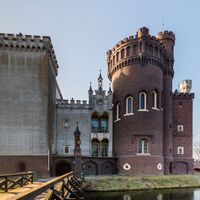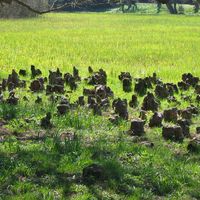Kórnik
6.46

Overview
Kórnik, located in the Greater Poland Voivodeship, is a city with a rich history and architecture, dating back to the 15th century. Chartered in 1458 and previously known as Kurnik, it consists of two historic villages: Bnin, which obtained town rights in 1395, and Kórnik, which developed under the rule of the Górka family. The city is home to a castle whose origins trace back to the Middle Ages. Surrounded by a moat, the castle underwent numerous transformations, including its conversion into a Baroque palace in the 18th century. Today, it serves as a historical site housing a museum with extensive collections, including works of art and unique exhibits. Kórnik is also known for its Arboretum, one of the largest dendrological parks in Europe, featuring approximately 3,000 species of trees and shrubs. The city's culture is rooted in a diverse national heritage, with Polish, German, and Jewish influences. Between 1939 and 1945, Kórnik became the site of tragic events during World War II, as its residents suffered under brutal occupation. Today, Kórnik attracts tourists with its landmarks, such as the Neo-Baroque town hall, the Gothic parish church, and the charming market square with 18th-century townhouses. The city is also associated with Wisława Szymborska, the Nobel Prize-winning poet born in Prowent. With a well-developed transportation network and growing infrastructure offering investment opportunities, Kórnik has gained a reputation as a tourist-friendly and business-oriented destination. Notable as well is the "Please, Thank You, Sorry" initiative, which promotes courtesy and mutual respect within the community, demonstrating that Kórnik is a city that values its heritage while carefully nurturing its future.
Location
You can also find here:
2025 Wizytor | All Rights Reserved

